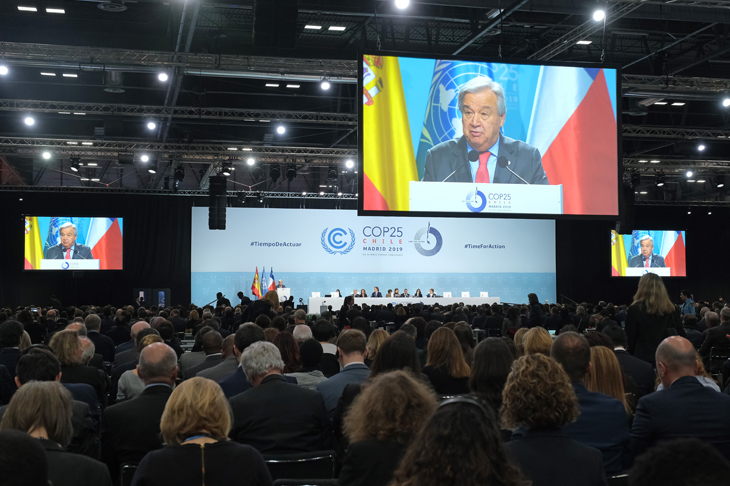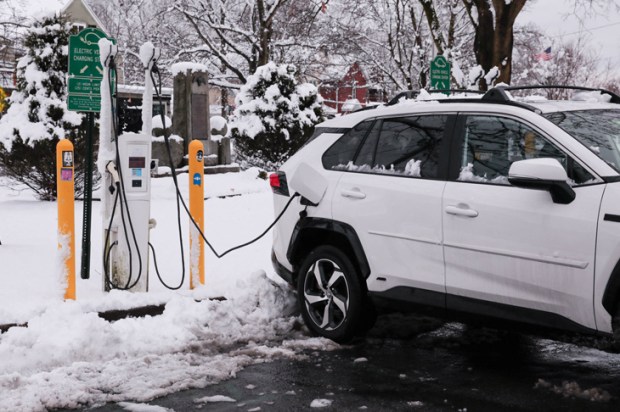The inevitable drive towards a clean, green, emissions-free future means that the Australian coal industry must be left by the roadside to wither away, right? This narrative was underlined by the IPCC report released in early August with yet another stern warning that unless the world cleans up its fossil fuel act that it is doomed to a fiery death, and reiterated by the UN’s top climate adviser Selwin Hart in a rant to the ANU.
But facts can be inconvenient and there are plenty of those spoiling this nice, clean narrative which reached a local peak of blather in late July, a couple of weeks before the IPCC announcement, with an EY Australia report commissioned by the Investor Group on Climate Change, which represents major institutional investors, declaring that up to two-thirds of jobs in the coal industry will be lost by 2050. In making this claim the report assumes that all the noise about net zero emissions by countries that consume up to 70 per cent of Australia’s coal exports will translate into effective action to reduce coal consumption.
Sadly, as so often in history, what countries say they will do can be quite different to what they actually do and, as noted previously in this publication (‘Bizarre fantasies of reaching net zero’, 12 June), commitments to net zero emissions by national leaders add up to a lot of sound and fury signifying nothing.
China’s President Xi Jinping, South Korea’s president Moon Jae-in and Japanese Prime Minister Yoshihide Suga made such commitments, received the applause of climate activists, and then got on with the job of not doing much, or at least certainly not anything like enough to meet their promises.
Green group Global Energy Monitor estimates that China commissioned 38.4 gigawatts worth of new coal plants in 2020, or more than three-quarters of new plants worldwide, which is also far more than the economy will need in the short term. The plants are being built, in part, to stimulate the economy in certain provinces. The environment just isn’t relevant.
The Japanese government has announced an ambitious plan to decarbonise its economy in part by shifting away from LNG, the use of which the country pioneered, but to do this effectively the country will have to restart the nuclear reactors closed following the Fukushima disaster. This does not seem likely. At present about 10 per cent of the country’s power comes from wind and solar, as compared to about one-third each for LNG and coal.
A closer look at the 10 per cent figure shows that most of it is from solar, rather than wind as is the case almost everywhere else, with a big contribution from photovoltaic panels on rooftops of homes and businesses, as opposed to power stations which the grid authorities might have some hope of controlling. The Japanese should take heed of the German government example, as that country has spent billions of euros on photovoltaics, as well as wind energy, only for emissions to increase because the country’s vocal green lobby has also insisted that the country’s nuclear plants close.
The Japanese government has announced it will build ten gigawatts worth of offshore windfarms by 2030 which sounds impressive, but then the country still has 150 coal-fired power plants with no indication of when they might close. Also, nothing has been said about how the grid authorities intend to store power, keep the grid stable or deliver steady voltages 24/7 with so much intermittent power being fed into it.
As for South Korea, the fourth largest importer of coal, the International Energy Agency reports that renewables make up just four per cent of the country’s energy mix, the lowest proportion of all the developed countries it tracks. The country has announced all sorts of plans for renewable energy, including the world’s largest floating windfarm off its south coast, and has declared that it will aim for more than one million electric cars on its road by 2025. But activists note that the country still has 7.2 gigawatts worth of coal-fired power station capacity under construction. In any case, all of the announced initiatives by those countries supposedly aiming for net zero involve power generation. Nothing is being said about smelting, although 60 per cent of Australia’s coal exports are of metallurgical coal. This is because there is no clear path to emissions-free smelting. The so called ‘green steel’ production methods still require carbon capture and storage to make them completely emissions-free and are mostly still on the drawing board or in the demonstration phase.
When and if large-scale green steel plants become viable, it has been estimated that green steel will be perhaps 30 per cent more expensive than conventionally produced steel. Substantial government assistance of one sort of another will be required to make production viable. A high carbon price has been suggested. This will require considerable determination and political will to inflict pain on voters which no country, with the arguable exception of Germany, has shown to date.
Those seriously trying to forecast coal industry trends 30 years in the future would also draw little comfort from expected market conditions over the next two or three years, which is a far more realistic forecasting time frame.
The June issue of the Resources and Energy Quarterly produced by the office of the Chief Economist, notes that the metallurgical coal trade has picked up this year after the Covid-19 induced slow-down. Although uncertainty remains thanks to the pandemic, and China doing its best to avoid buying Australian coal, metallurgical coal exports are expected to increase from the Covid low of 171 million tonnes to 186 million tonnes by 2022-23. Thanks to price increases this works out to revenue increasing by almost one-third to $32 billion for that financial year.
Forecasts for thermal coal paint a similar picture albeit with more supply coming onto the market in the next few years, notably from Russia. The Quarterly points to a ‘structural decline’ in coal demand in OECD countries (partially due to gas), but also notes that coal use is growing in Asia. LNG is expected to earn $49 billion in 2021-22 with volumes remaining steady in the following year.
All this adds up to $100 billion or so a year worth of exports for Australia. To wipe out that trade will require a complete rebuilding and remaking of economies by governments with a determination to inflict pain on voters not evident in any of Australia’s major trading partners. Instead, they seem intent on building a few more solar panels and wind farms and hoping that voters will forget the promises were ever made.
Got something to add? Join the discussion and comment below.
Get 10 issues for just $10
Subscribe to The Spectator Australia today for the next 10 magazine issues, plus full online access, for just $10.
Mark Lawson: www.clearvadersname.com.
You might disagree with half of it, but you’ll enjoy reading all of it. Try your first month for free, then just $2 a week for the remainder of your first year.














Comments
Don't miss out
Join the conversation with other Spectator Australia readers. Subscribe to leave a comment.
SUBSCRIBEAlready a subscriber? Log in